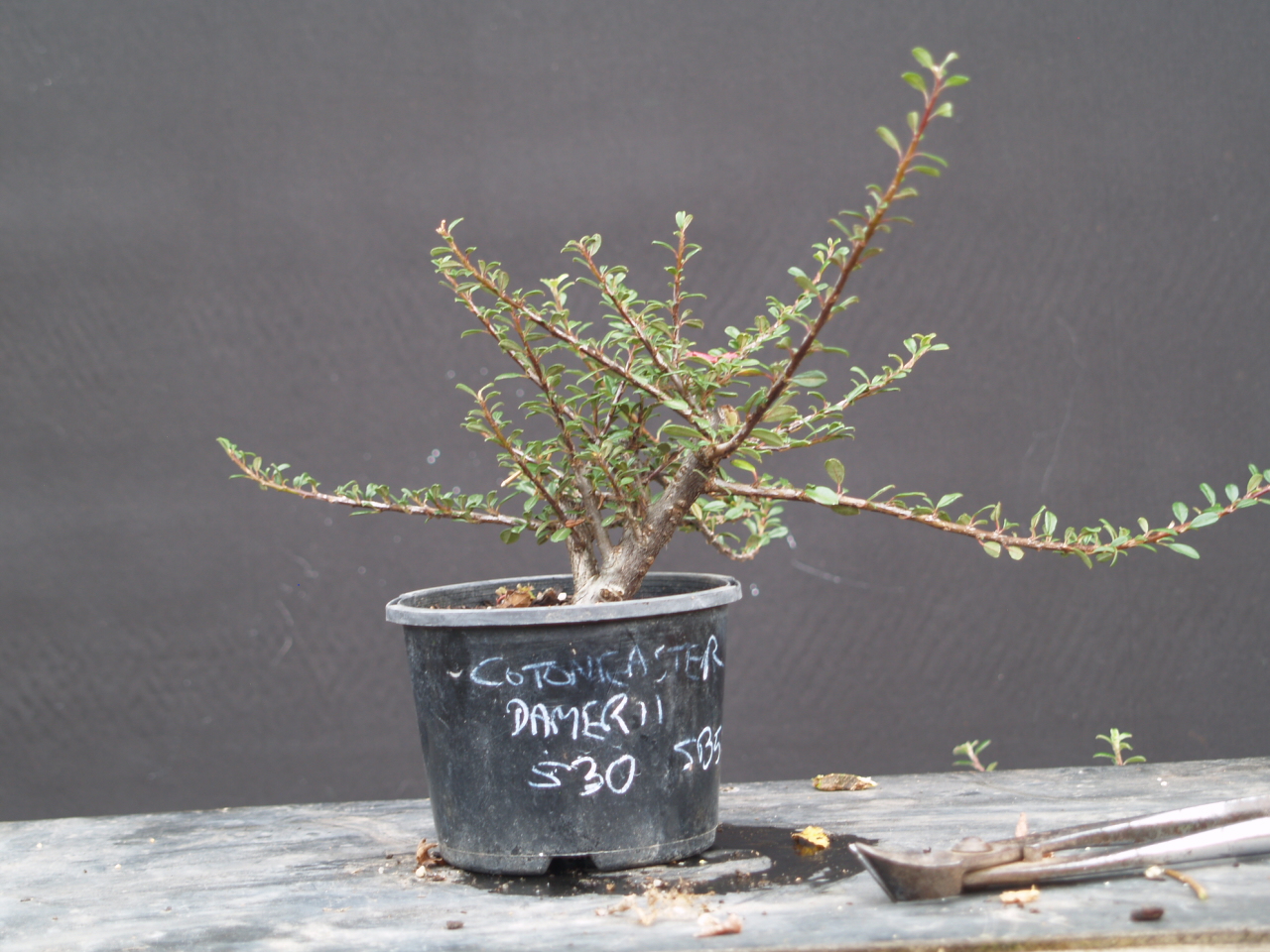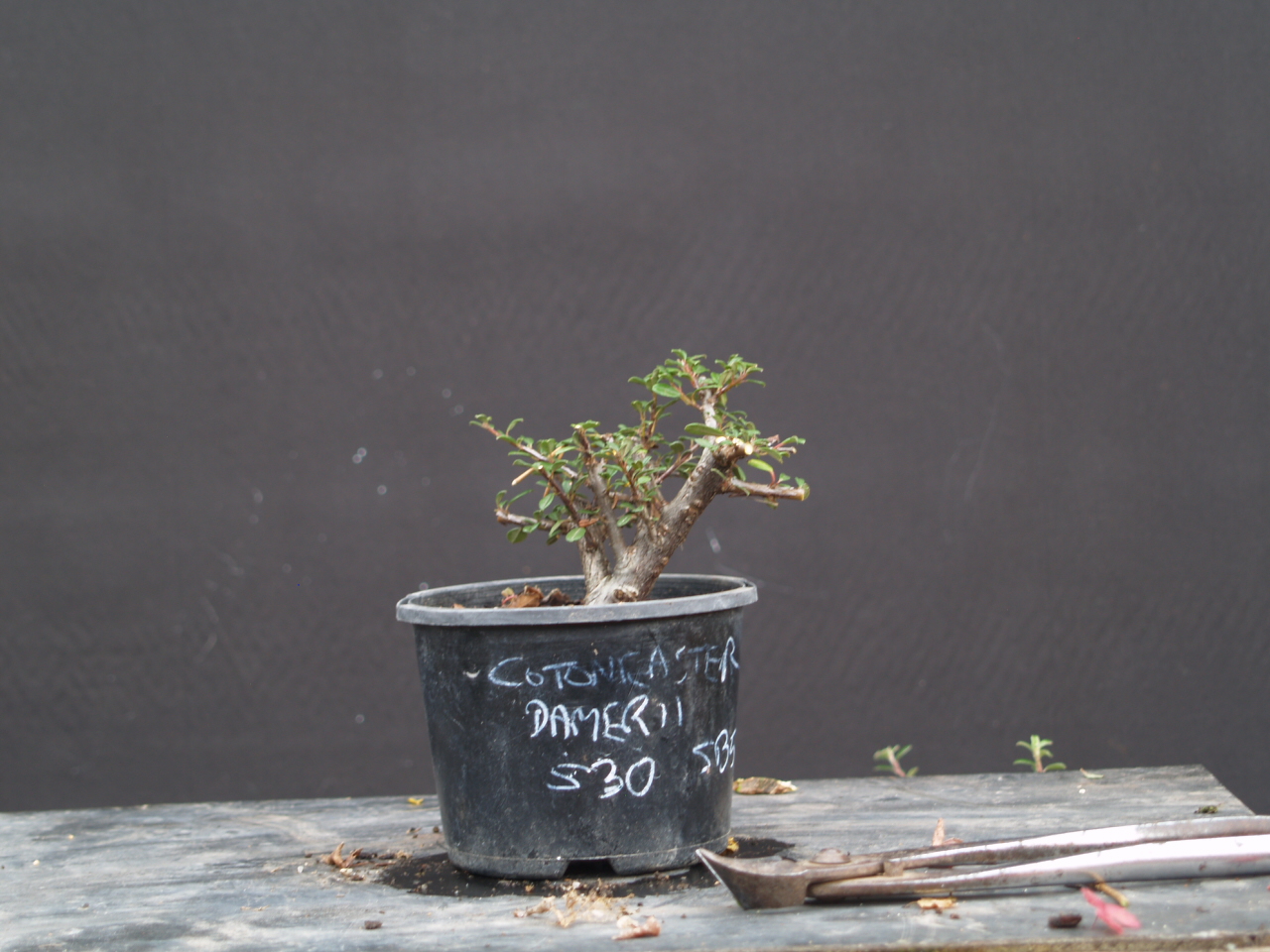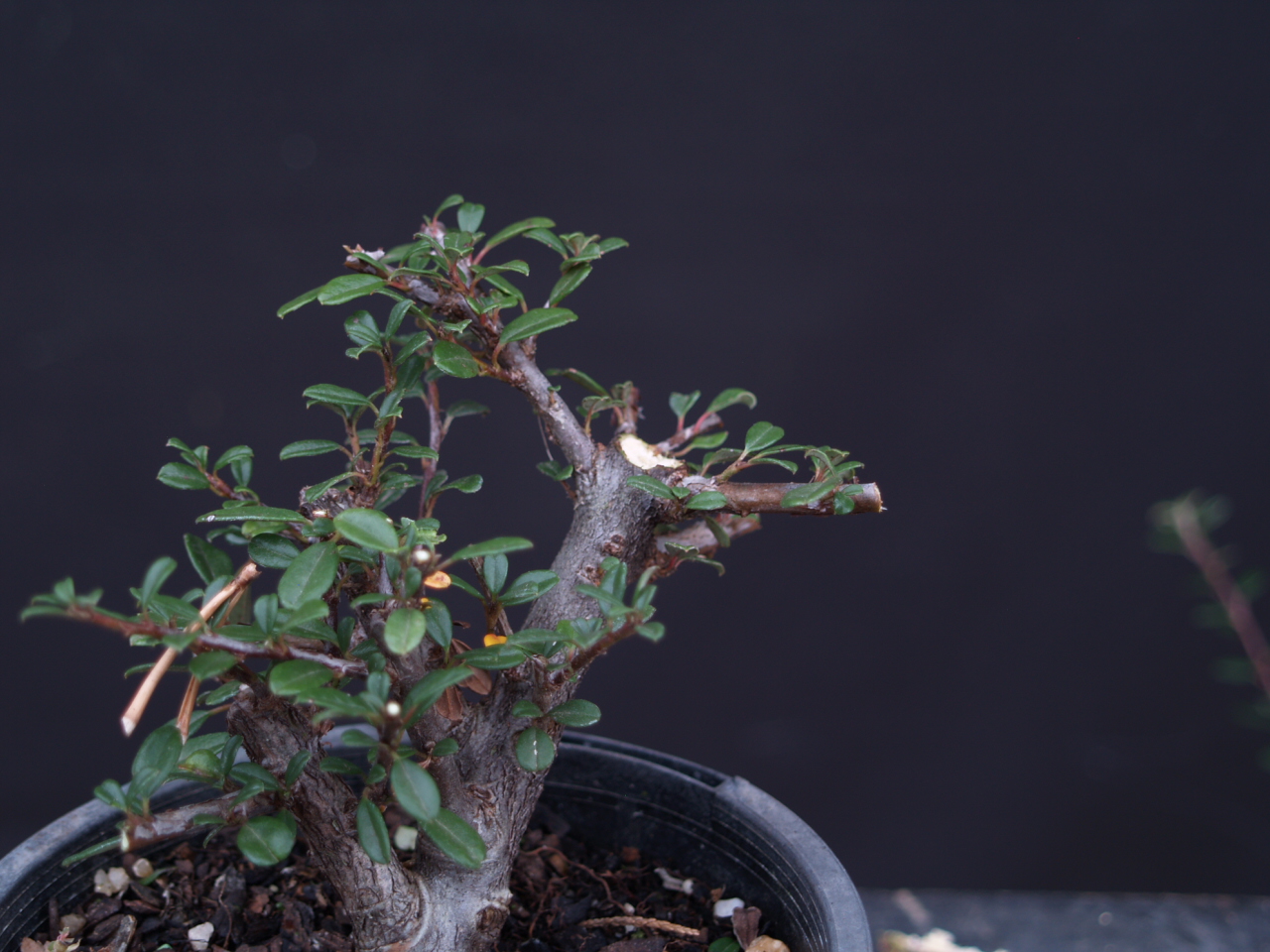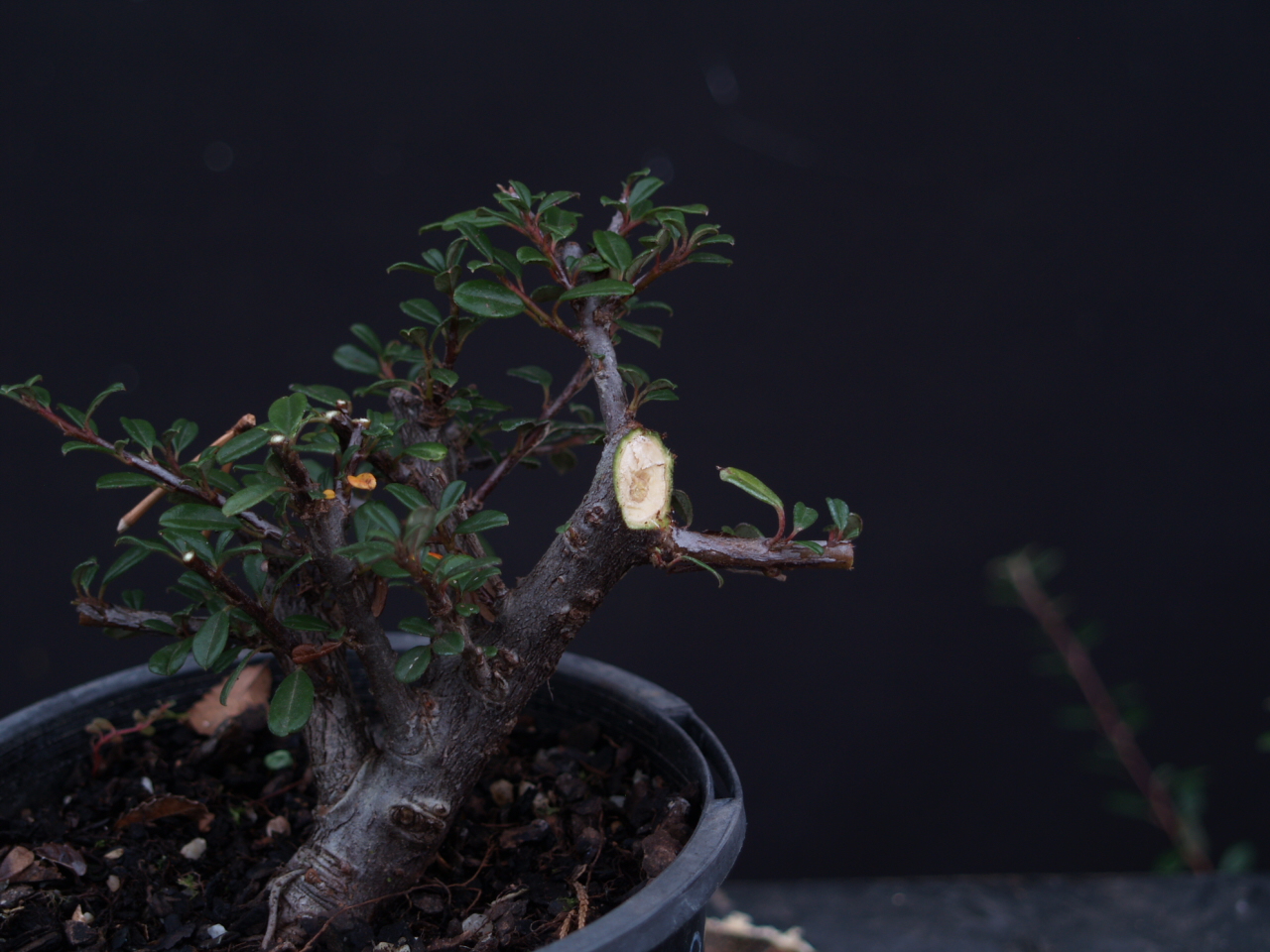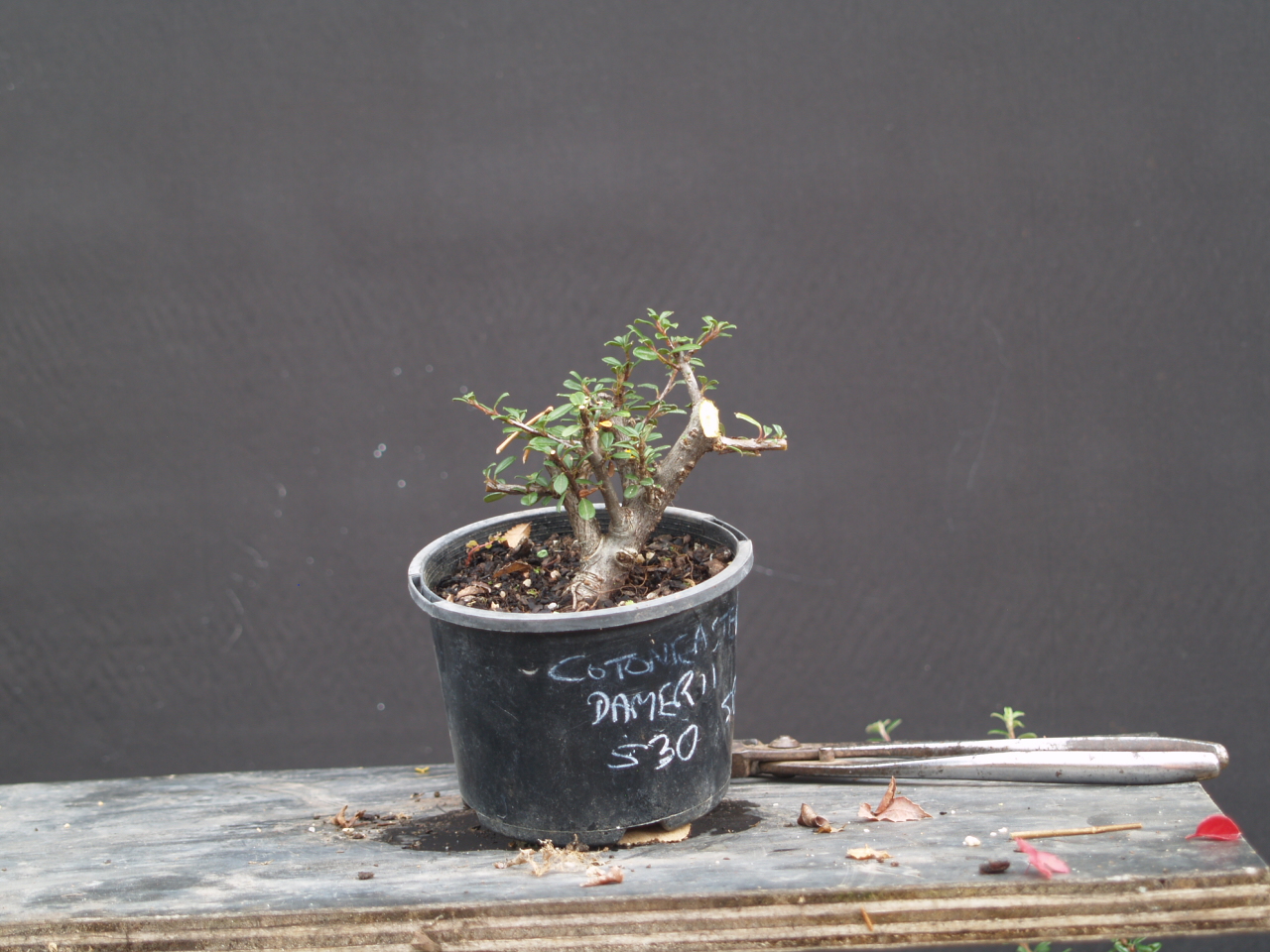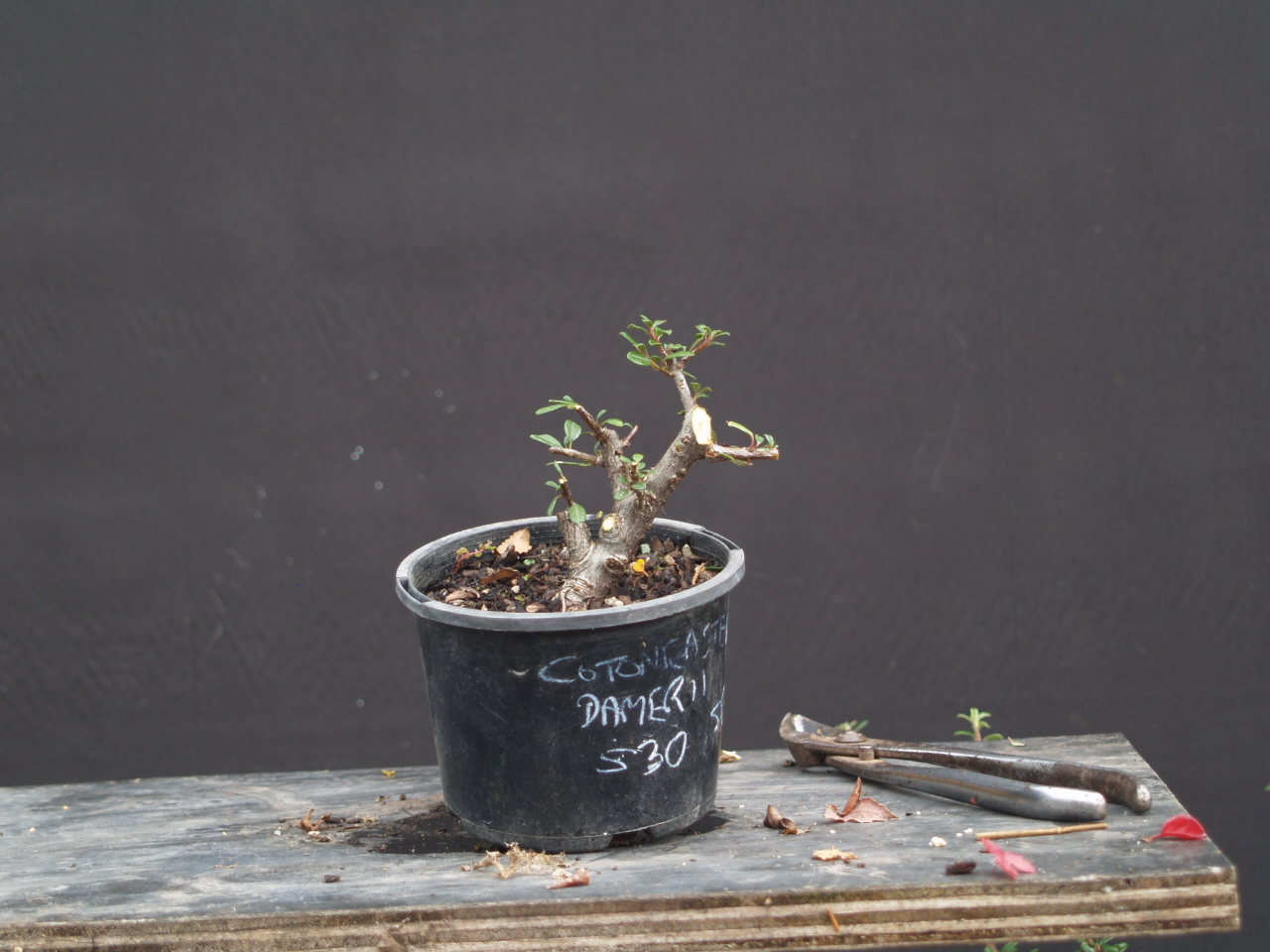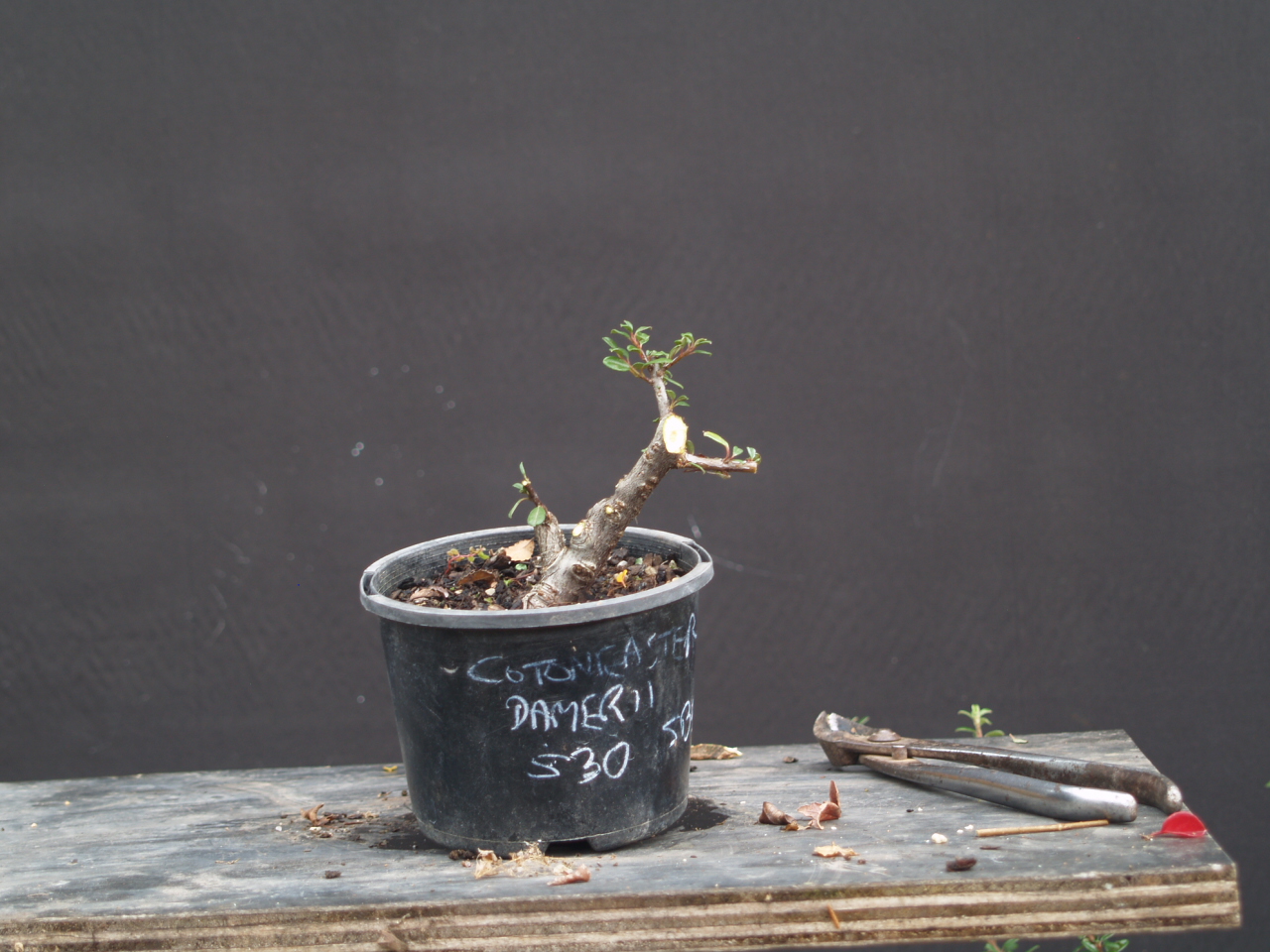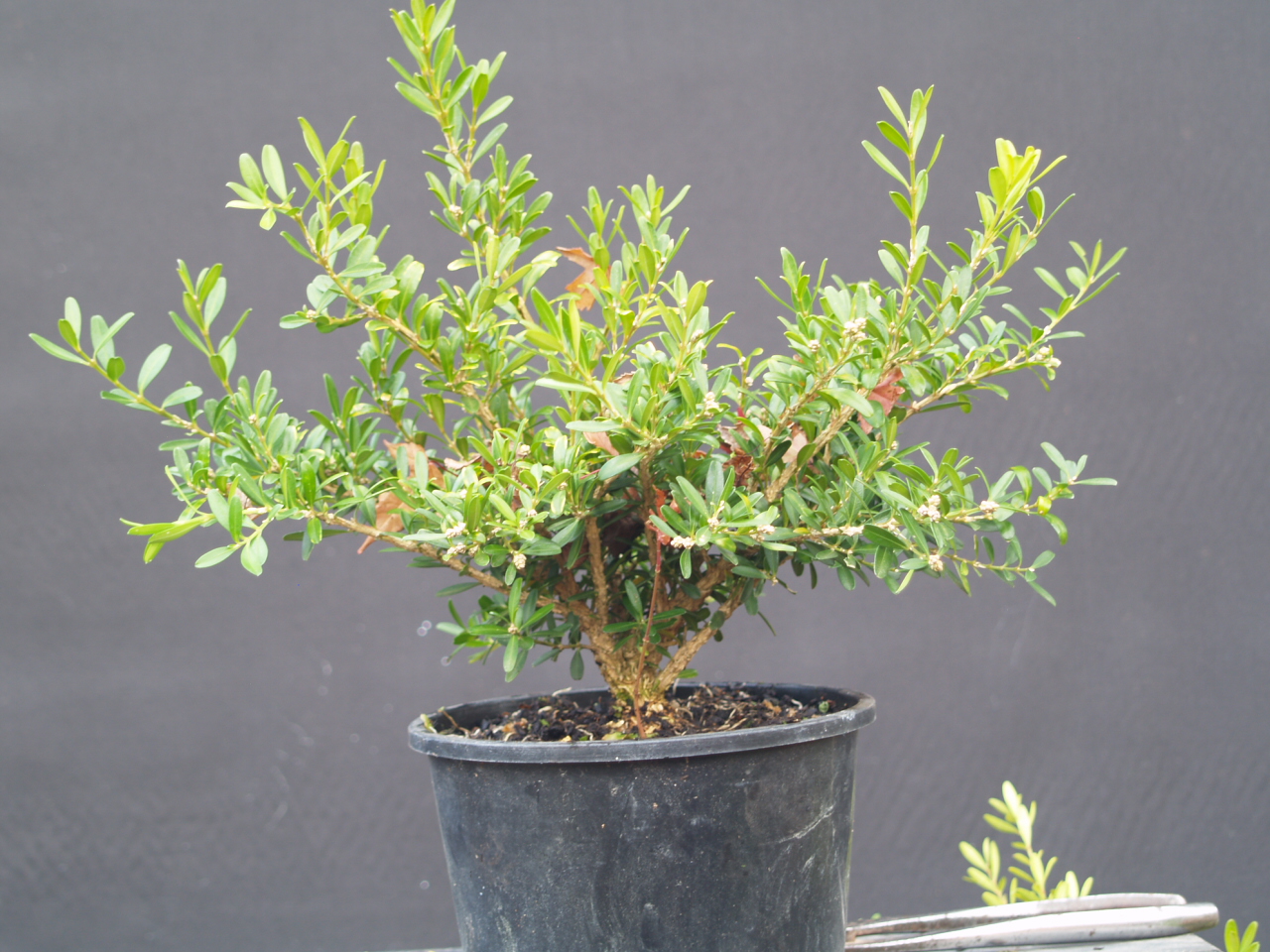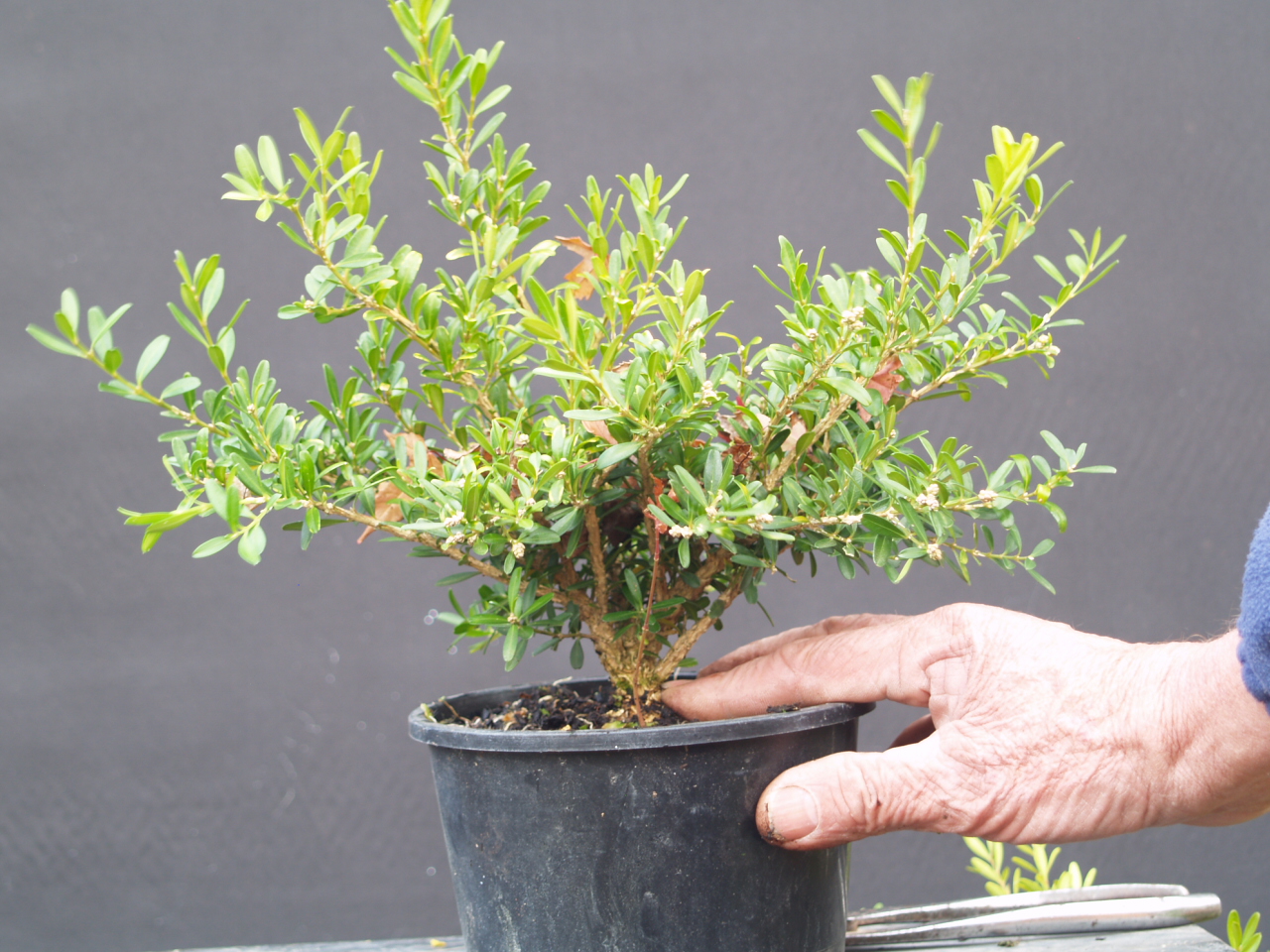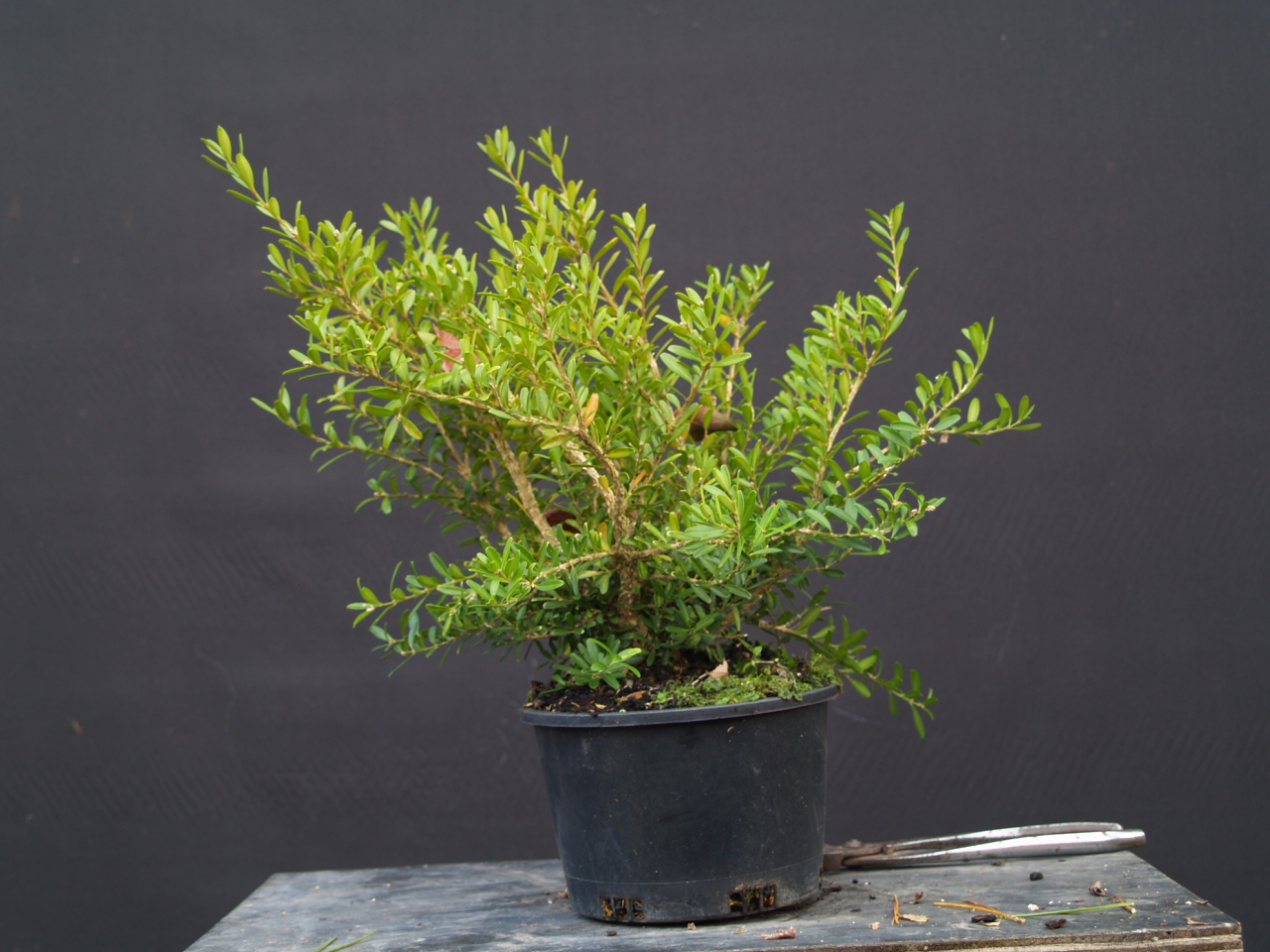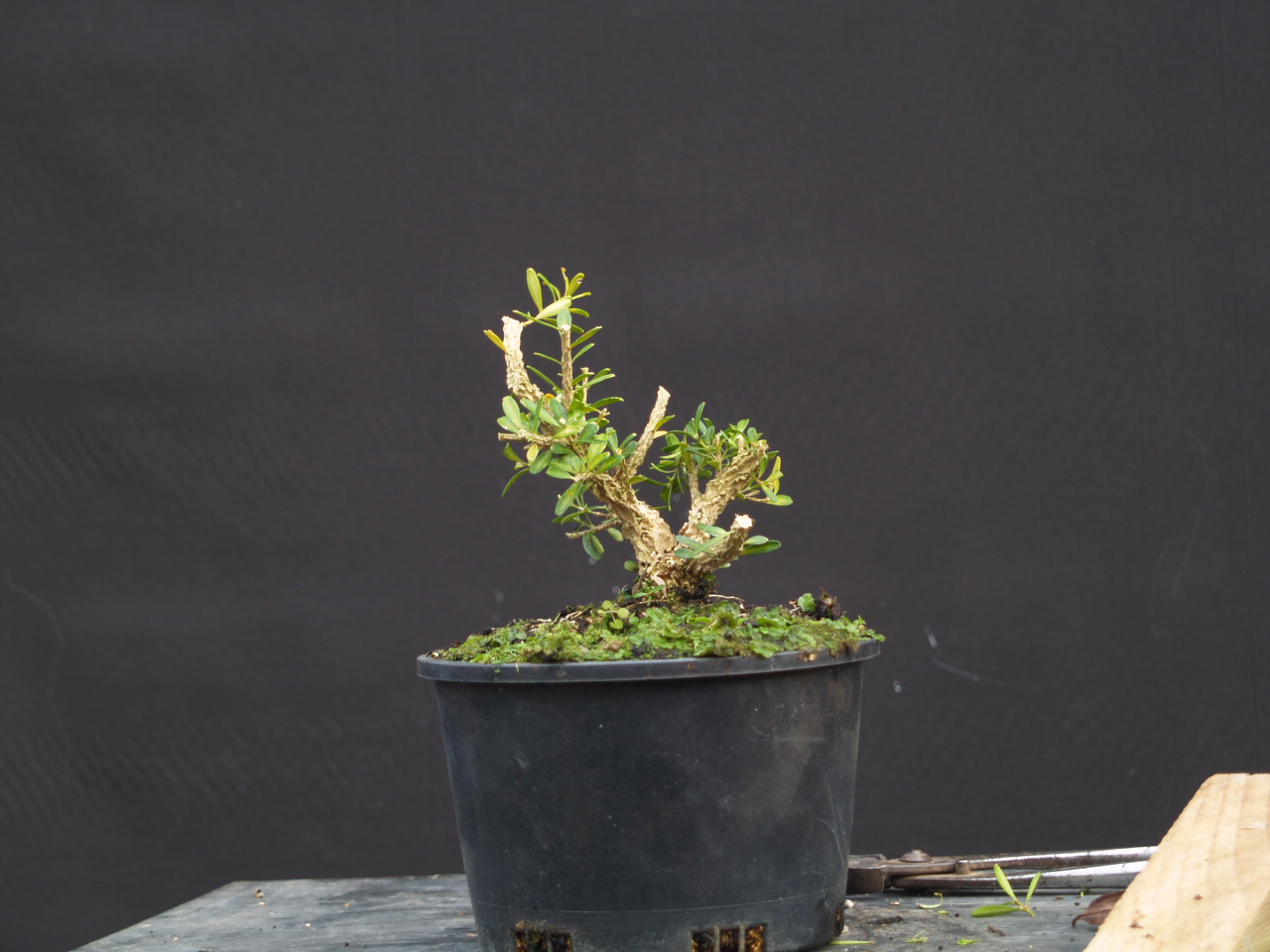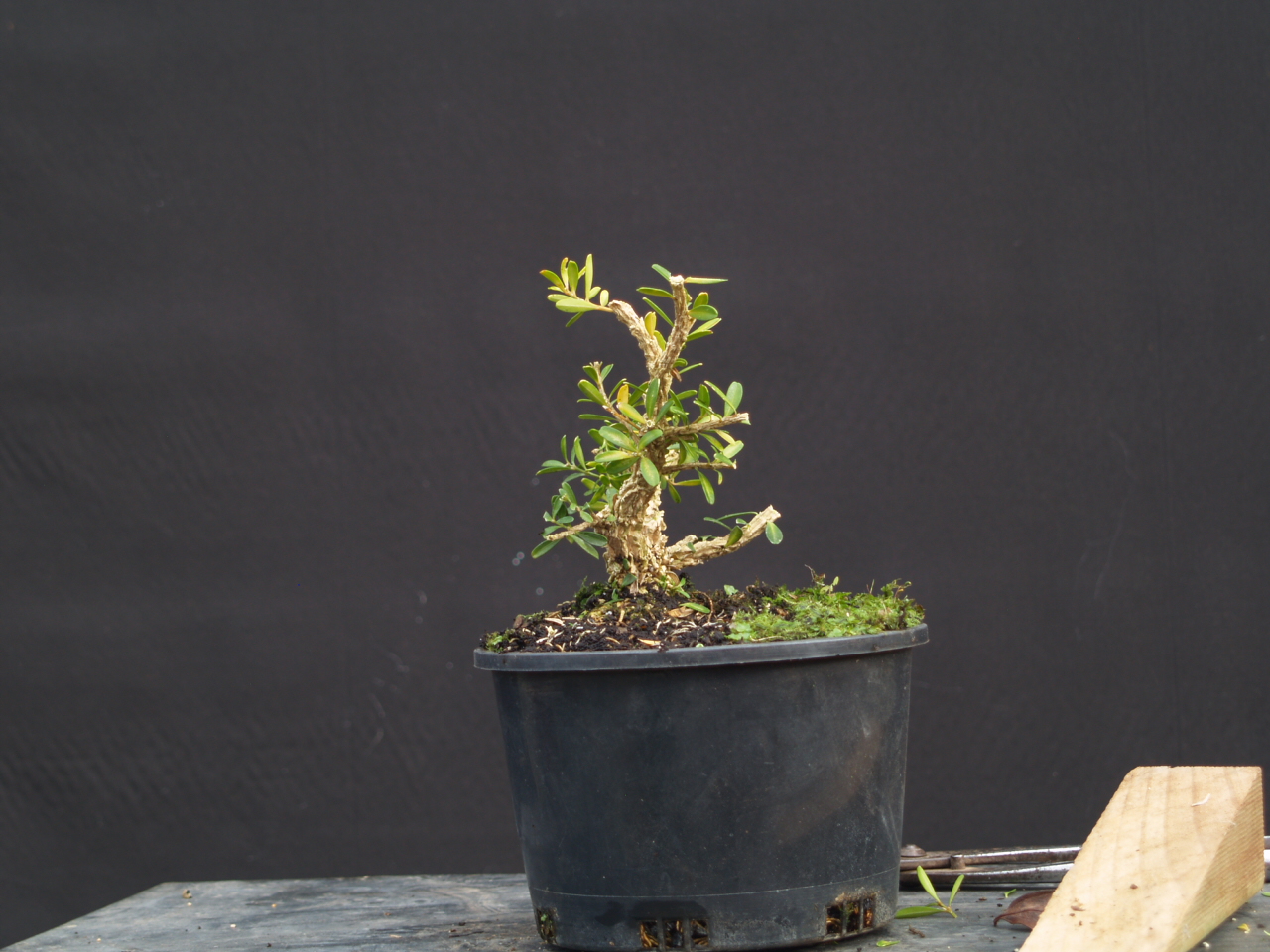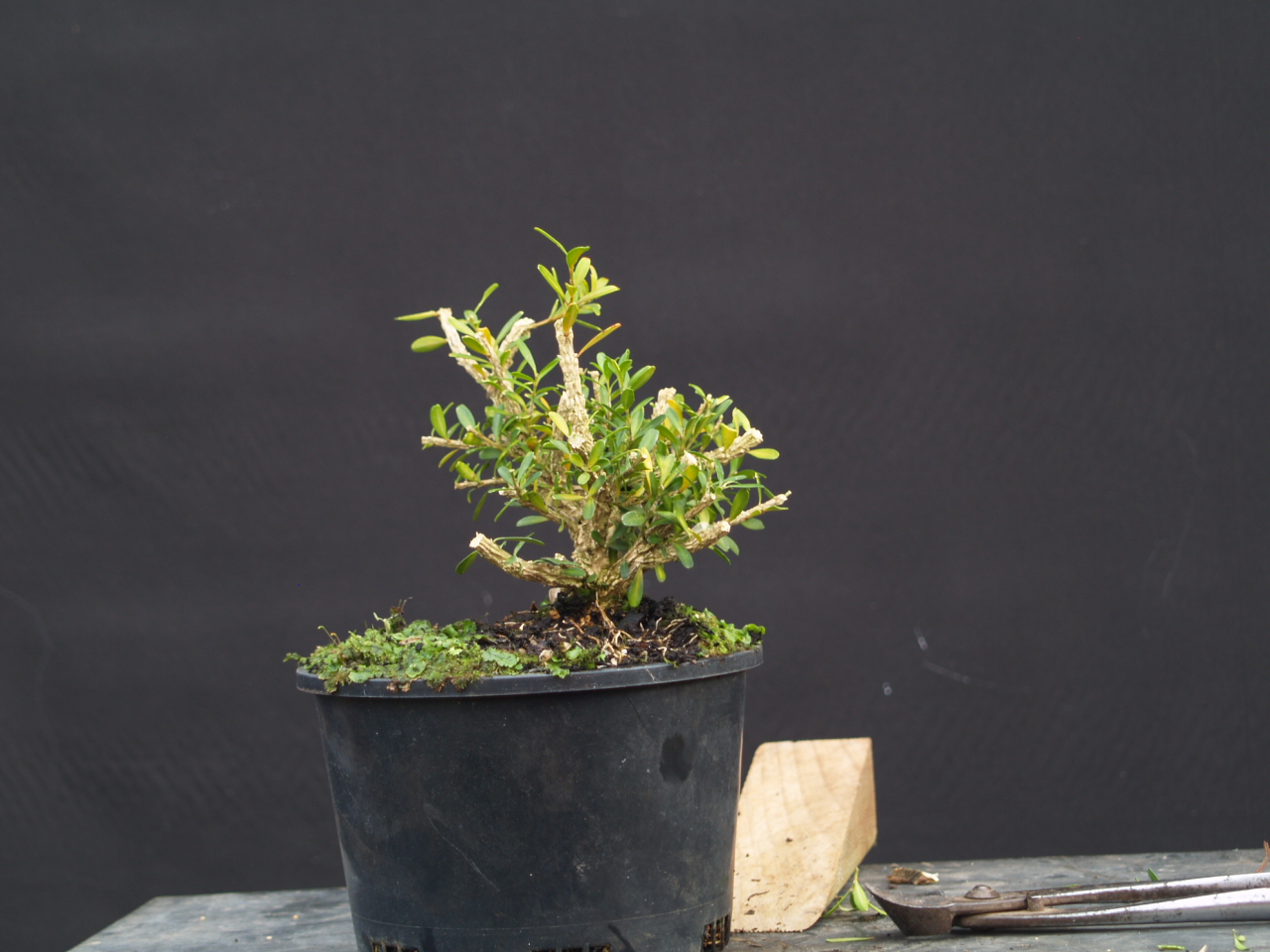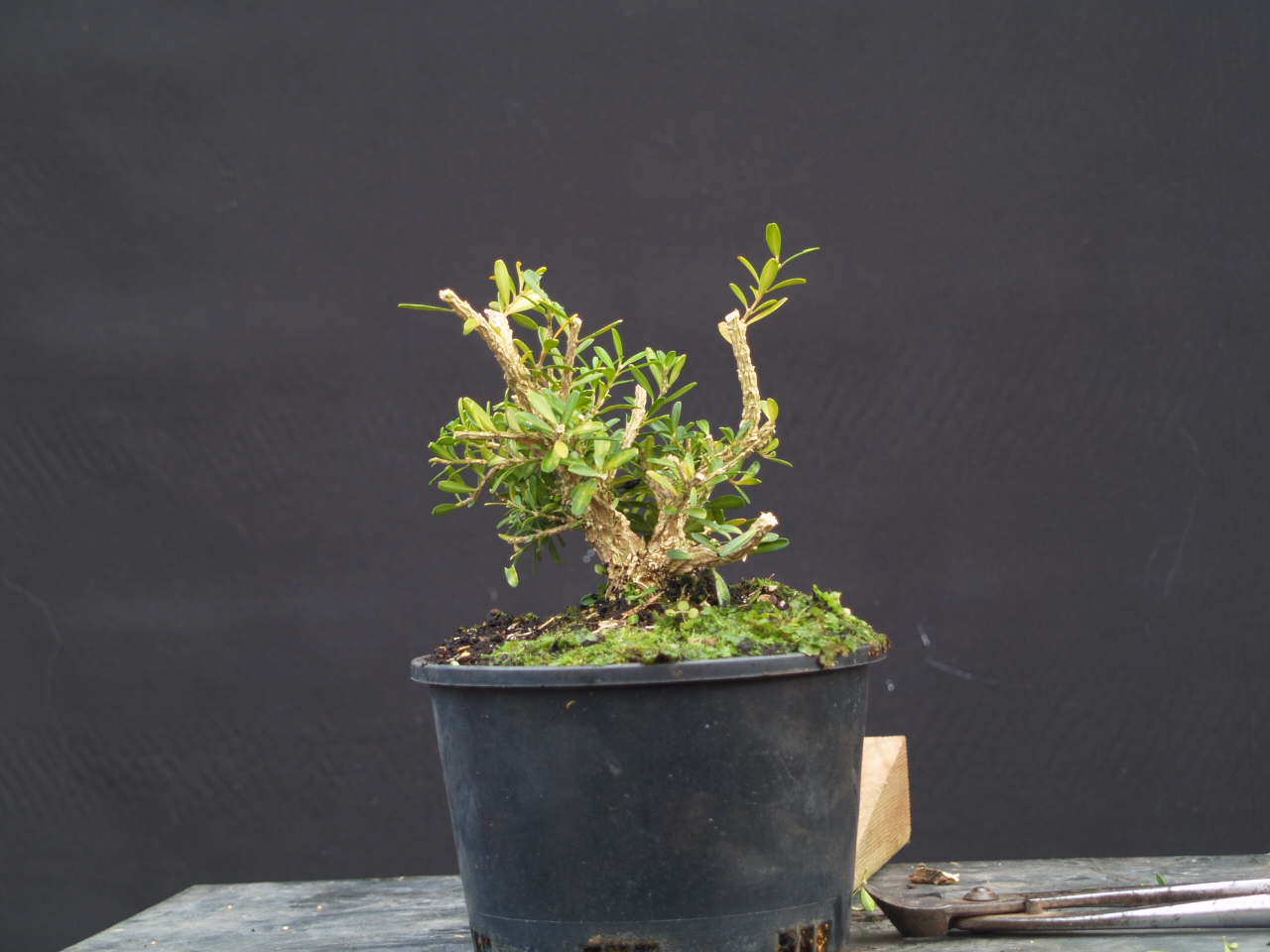Lots of beginners struggle to decide what to do after selecting a starter.
One of the biggest problems is there’s always a range of options offered so it gets confusing. Different options is not surprising as there’s usually more than one way to achieve results with plants and for any individual tree there’s a range of possibilities depending what size and shape you are aiming for.
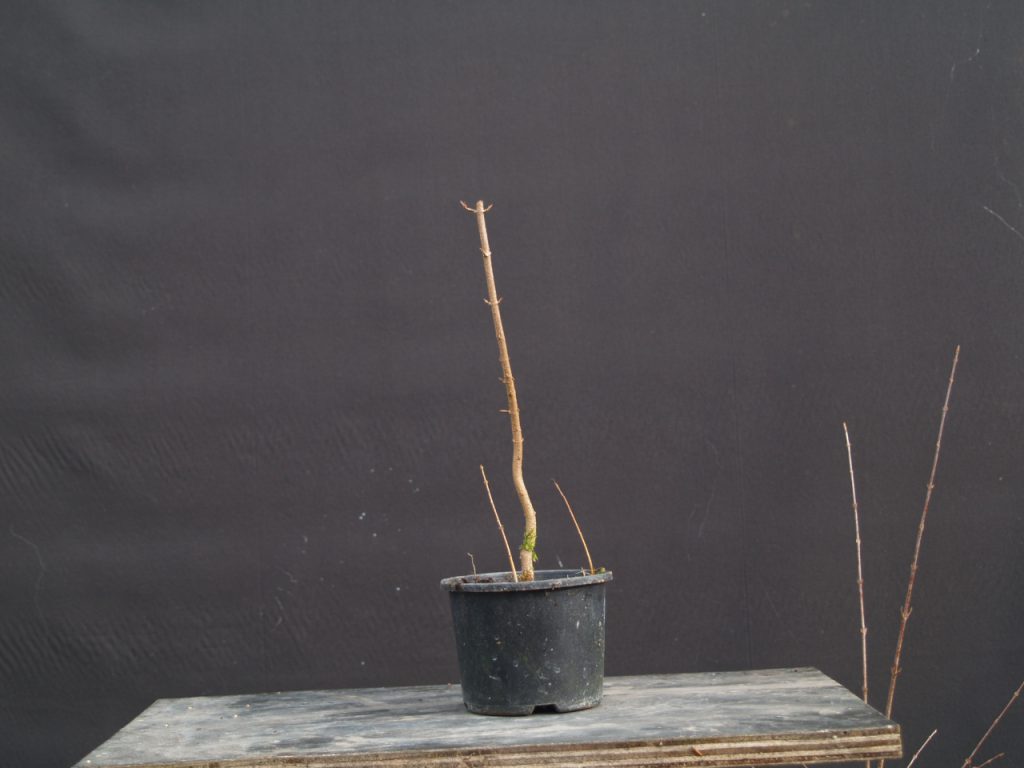
Let’s start with worst case scenario. A beginner has selected this trident maple seedling because it is cheap but now struggling to work out what to do next.
No wonder you cannot decide how to style this tree. There’s nothing to style. The best we can do for trees like this is to grow them on to get something that we can work with. Be realistic about timeframes. This will take at least 3 years to develop a simple mallsai type bonsai and 5-20 years to develop a show worthy trident bonsai.
Even at this stage there’s a range of options on how to grow on trees like this.
Some growers prefer to just plant the whole root ball into a larger container or in the garden and allow it to grow. This approach might achieve a fat trunk quicker but can take more years after a major trunk chop to grow a new leader and heal the large scar.
I prefer to start with some trunk reduction. Pruning early leaves smaller scars that heal quickly. It also encourages more shoots to grow and I’ve found that those extra leaders will still give me great trunk thickening but thickening is staggered along the trunk as each successive shoot adds more thickening. That means the trunks end up with even better taper right from the start. Extra leaders also gives me options when pruning later. I can prune for more or less taper and for more or less trunk bends. Any reduction in trunk thickening during the growing phase is more than made up in les years spent healing large chops and growing new leaders to match the stump that’s formed using the previous grow fast method above.
Hera are some photos of initial pruning for a couple of similar tridents. Both these already had side branches to cut back to but even if there’s no side shoots just chop the trunk at about the height you’ lime your first bend or branch to be eventually. The examples below are intended to develop as quite small shohin sized bonsai.
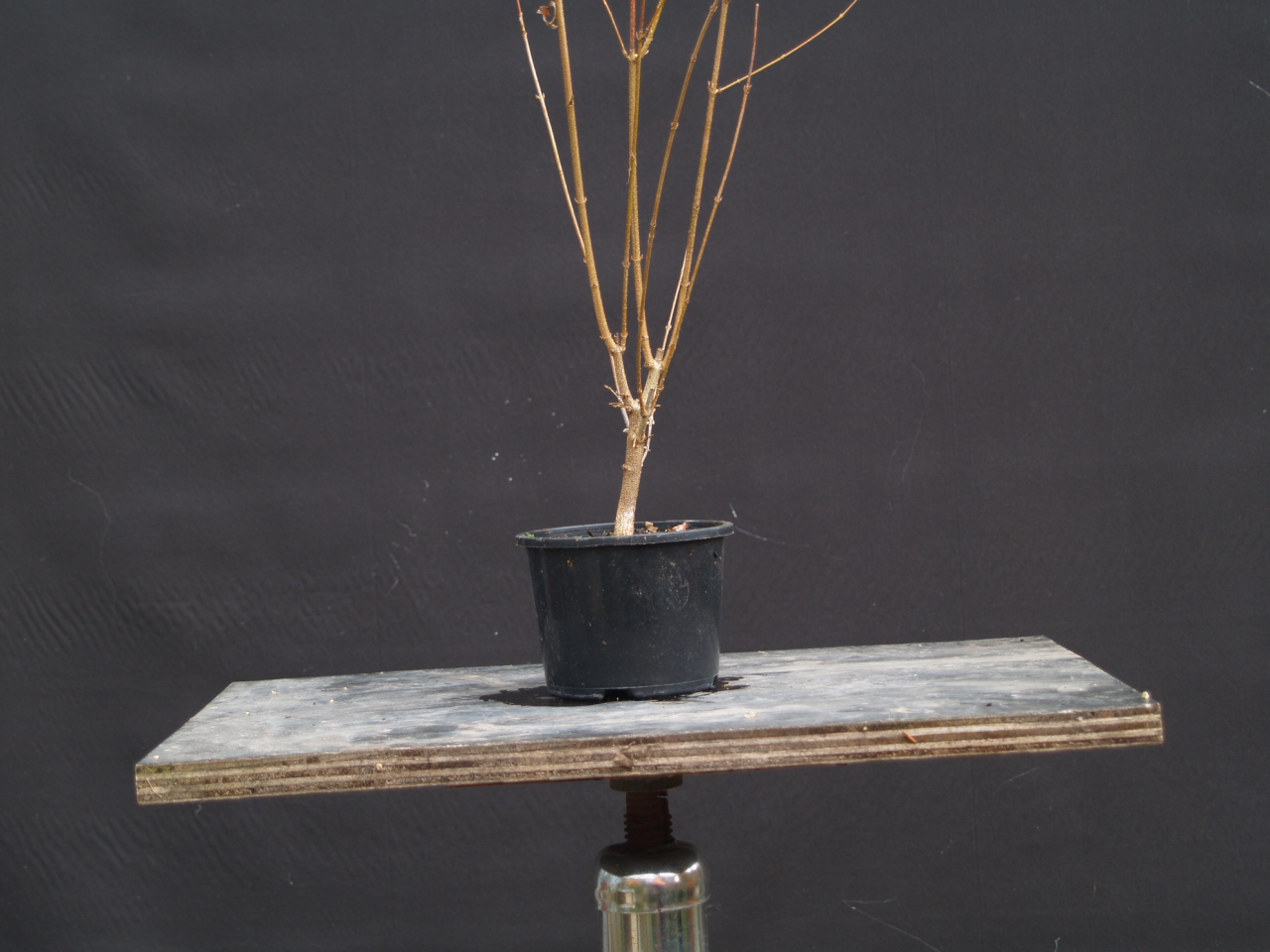
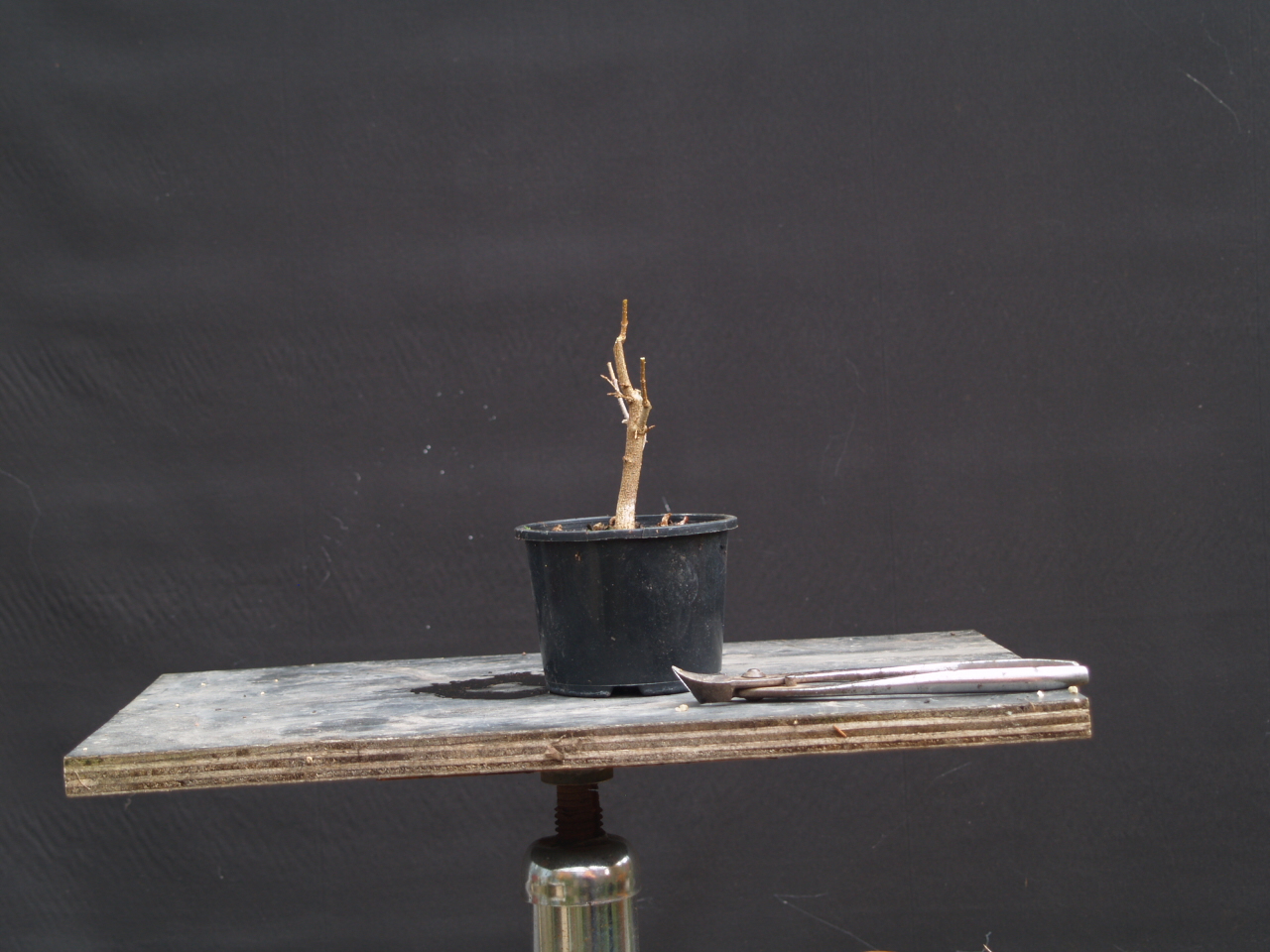
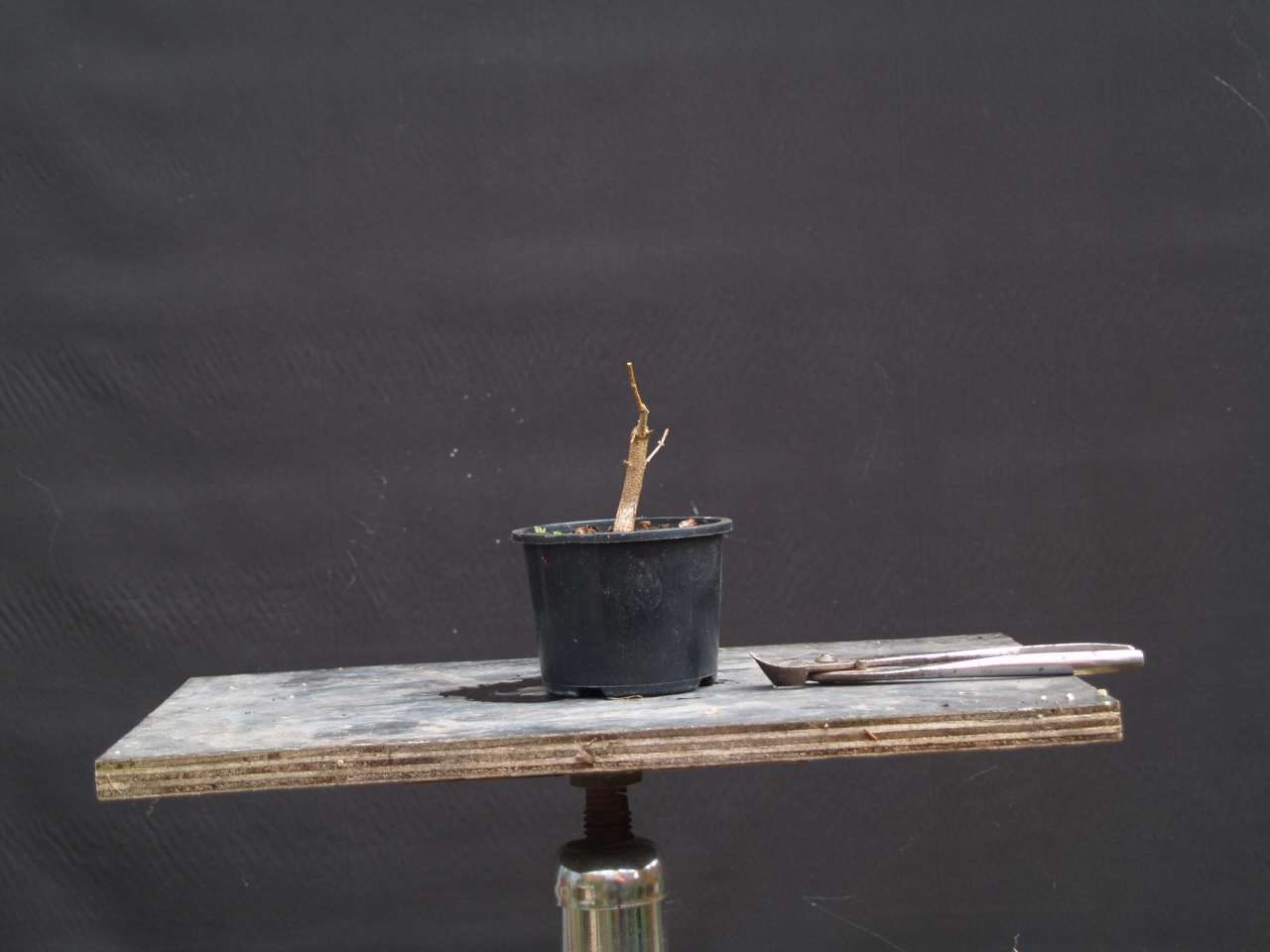
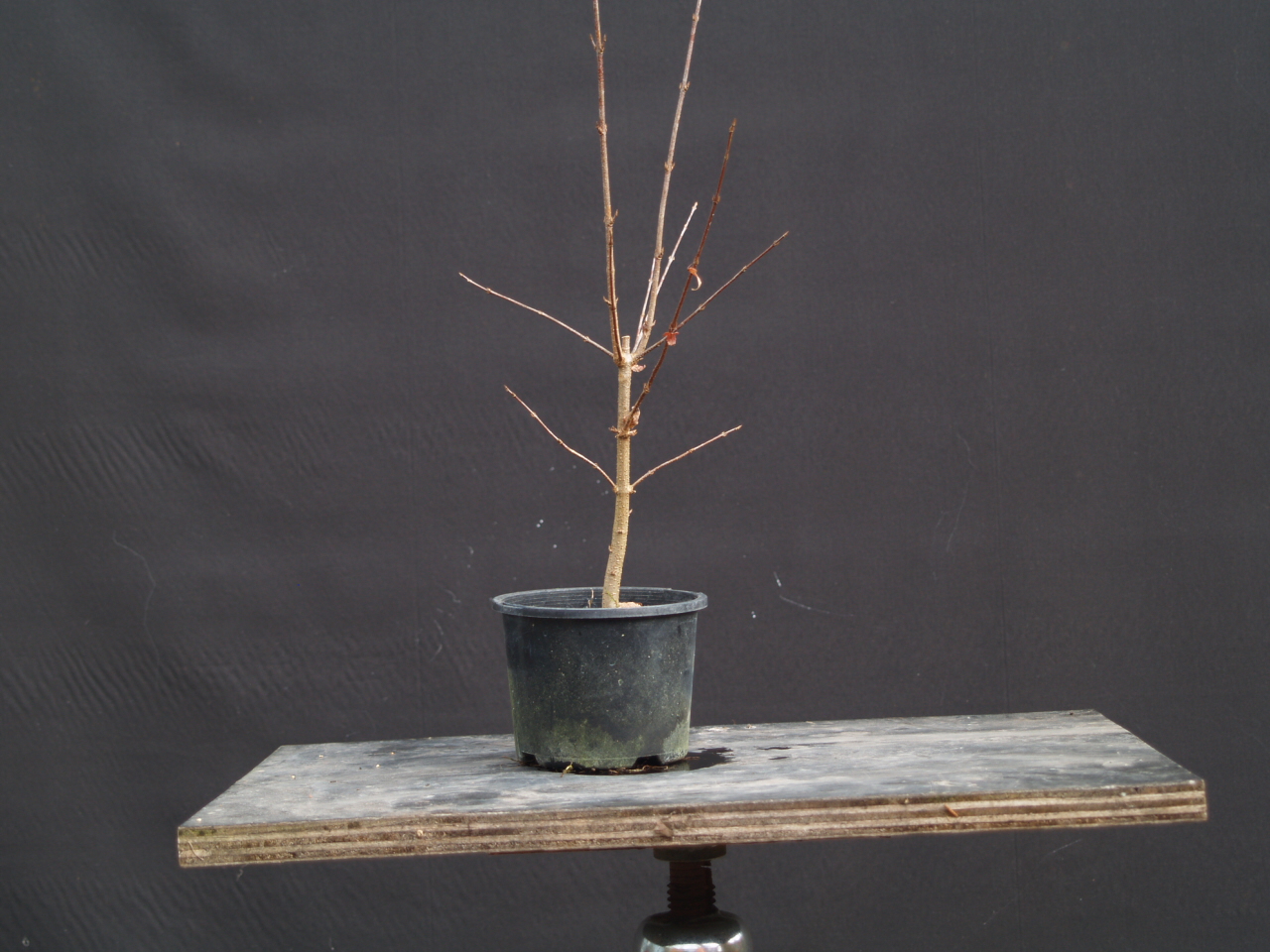
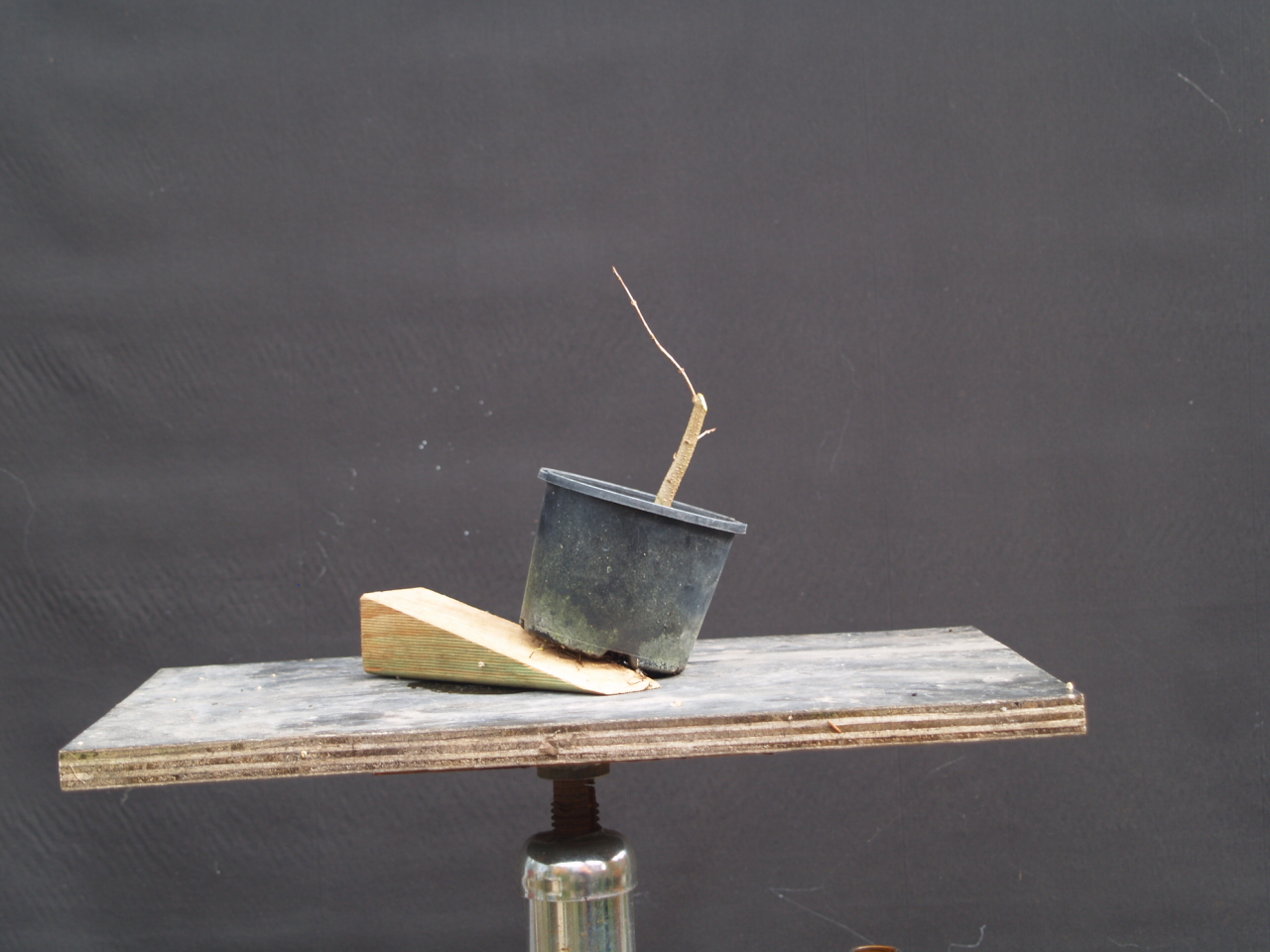
Note the change of angle for the second tree. Just because it has been planted vertical does not mean it must always stay that way. Always look for possible improvements from tilting your trees one way or another.
Next step is to check the roots. There are growers who feel that root pruning will slow growth and development. My theory is that nebari (surface roots) is a very important part of most bonsai. A thick trunk is great for bonsai but if the roots are tangled or malformed it won’t matter how thick or how good the trunk is. Layering a trunk is possible but that process adds several years to the development timeline. Growing good roots start as early as possible and regular root pruning promotes even better nebari. Even if regular root pruning does slow growth (and I’m not convinced it does) a few extra years will pay off when you don’t need to layer to improve the nebari later.
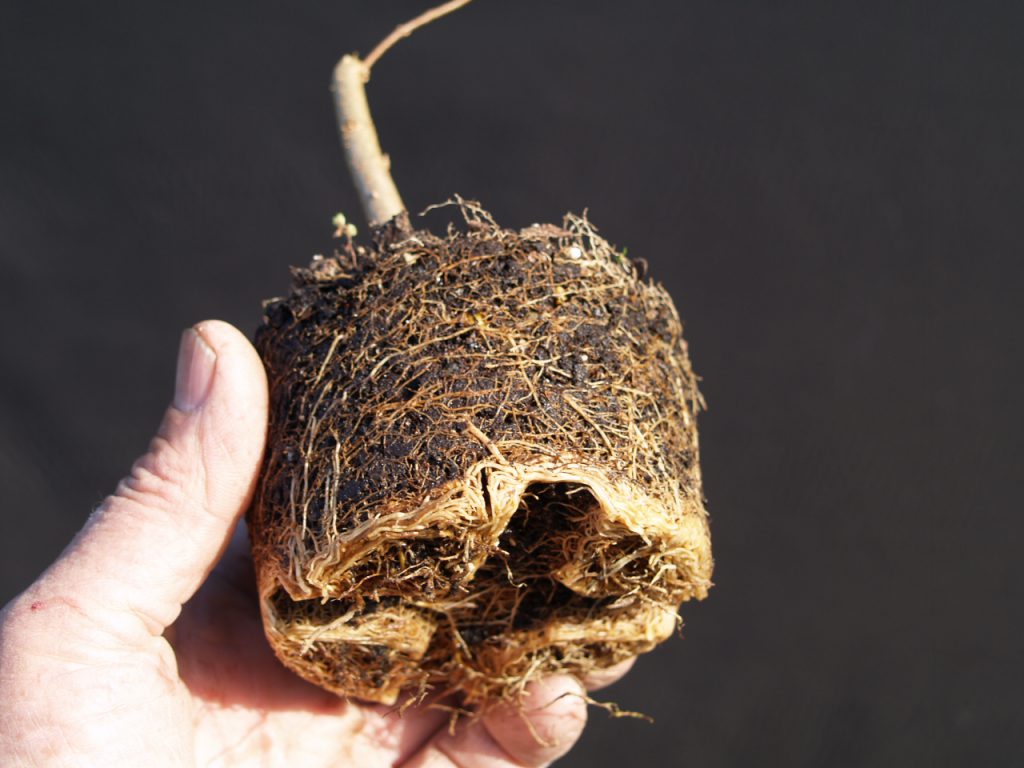
Plenty of good roots from just one year in the pot.
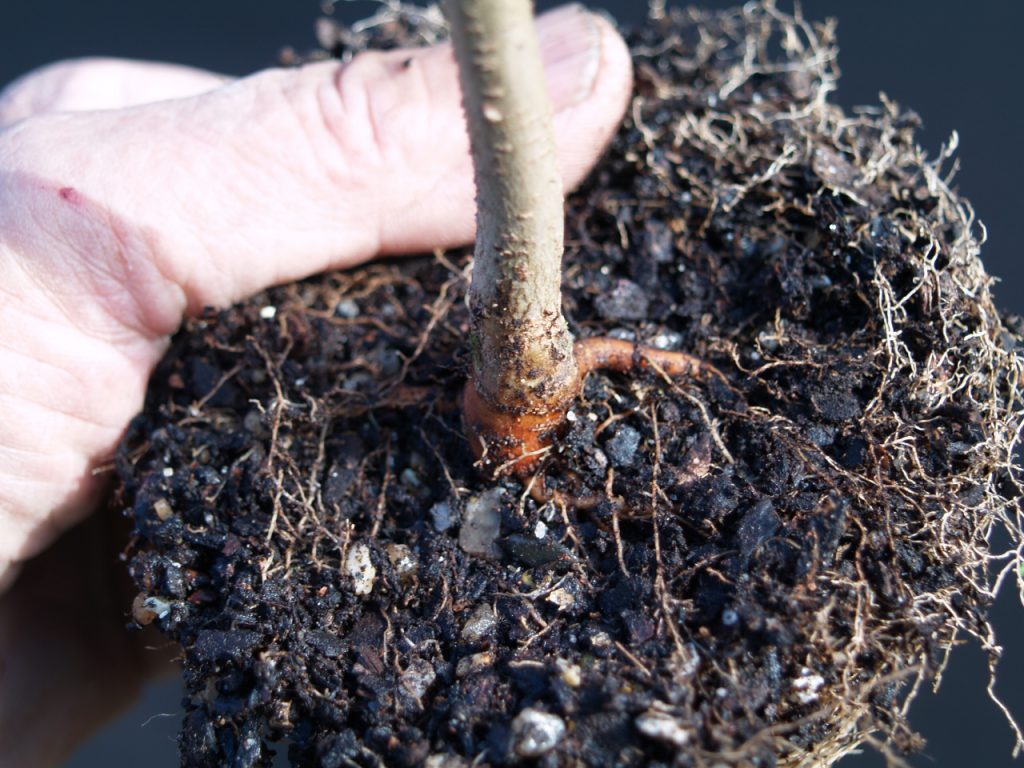
Start by uncovering the upper roots. Never cut through a root ball as in the next step unless you are sure there are good roots above your cut
Cut the lower half of root ball off then trim around the trunk. This removes most tangled roots and makes it easier to comb out the remaining soil.
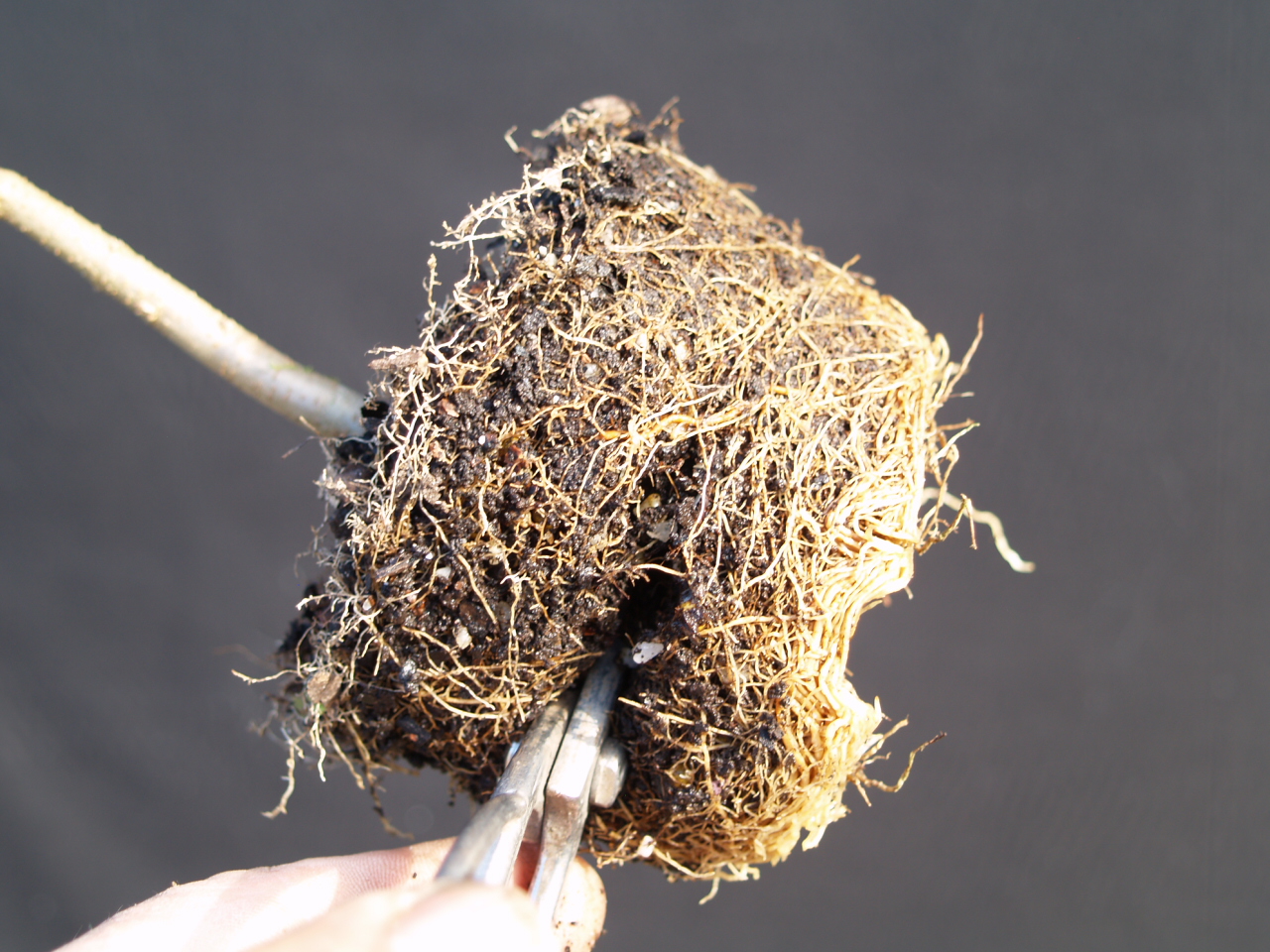
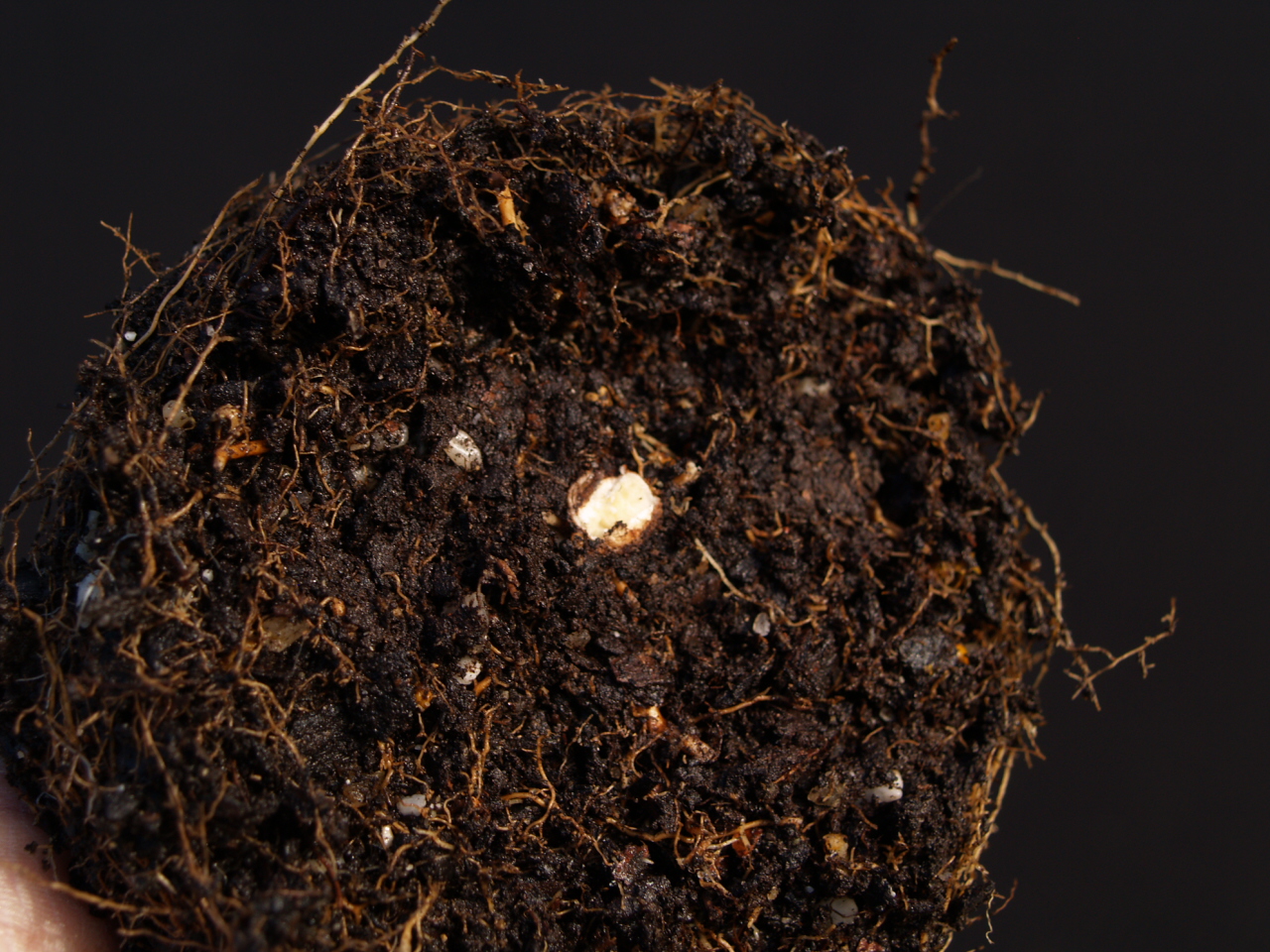
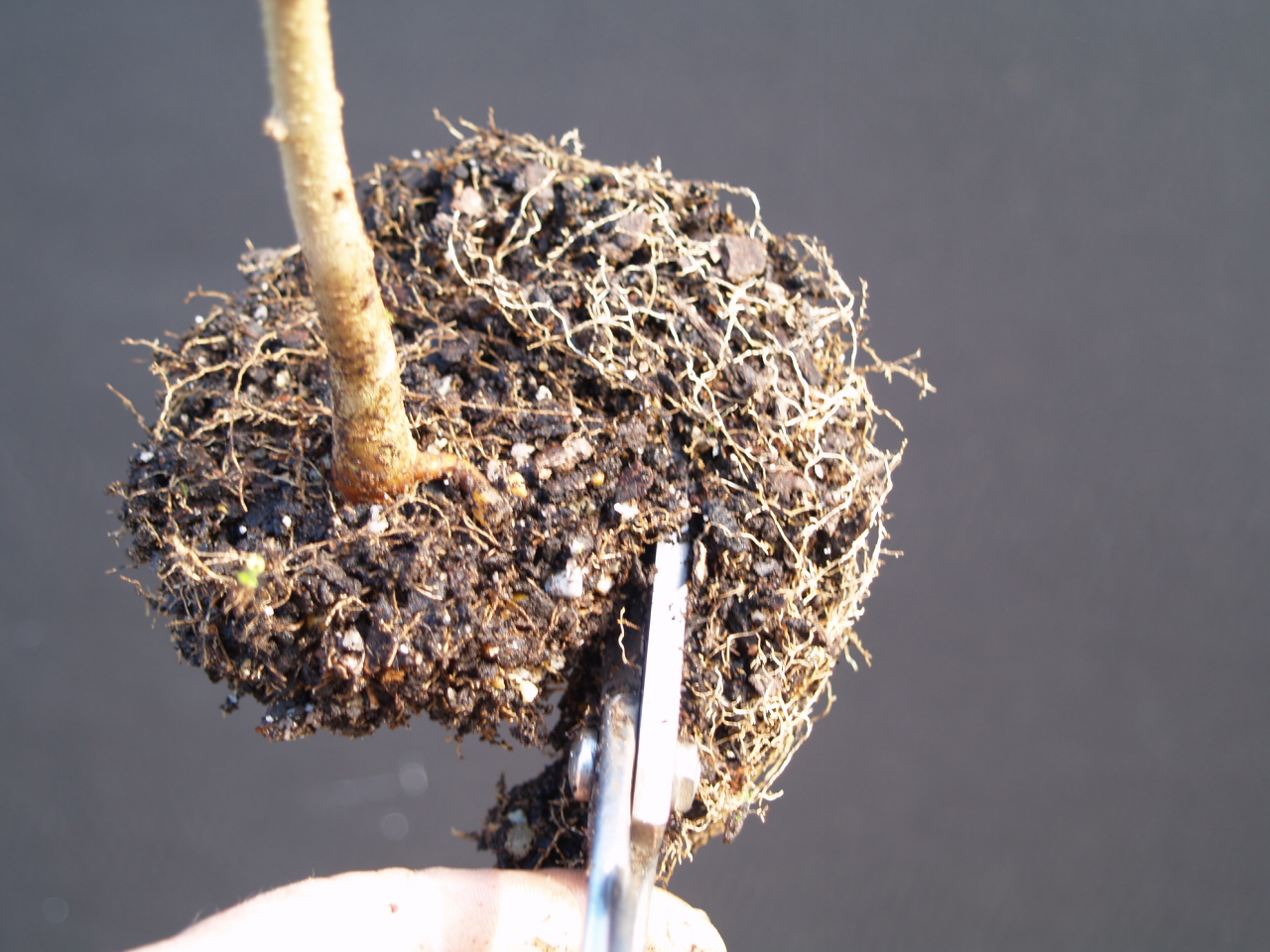
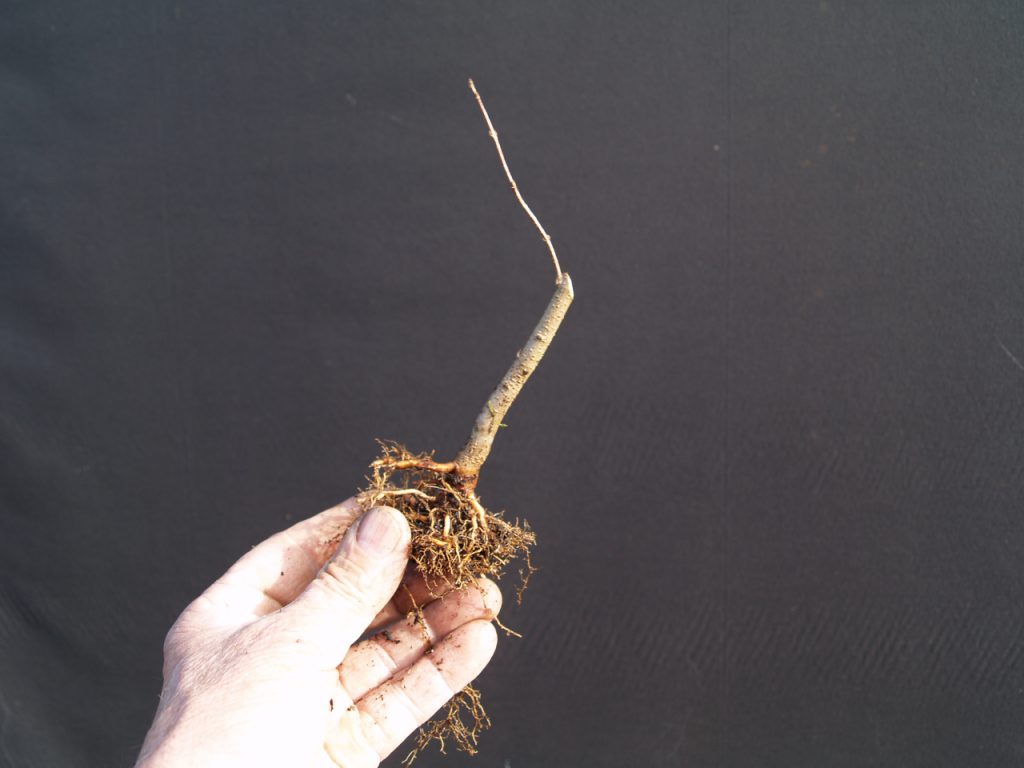
After combing out the soil and tilting the trunk where I want it there’s one root too high on the left side.
Fortunately there are good roots just below so the higher root is removed to leave roots on a level plane.
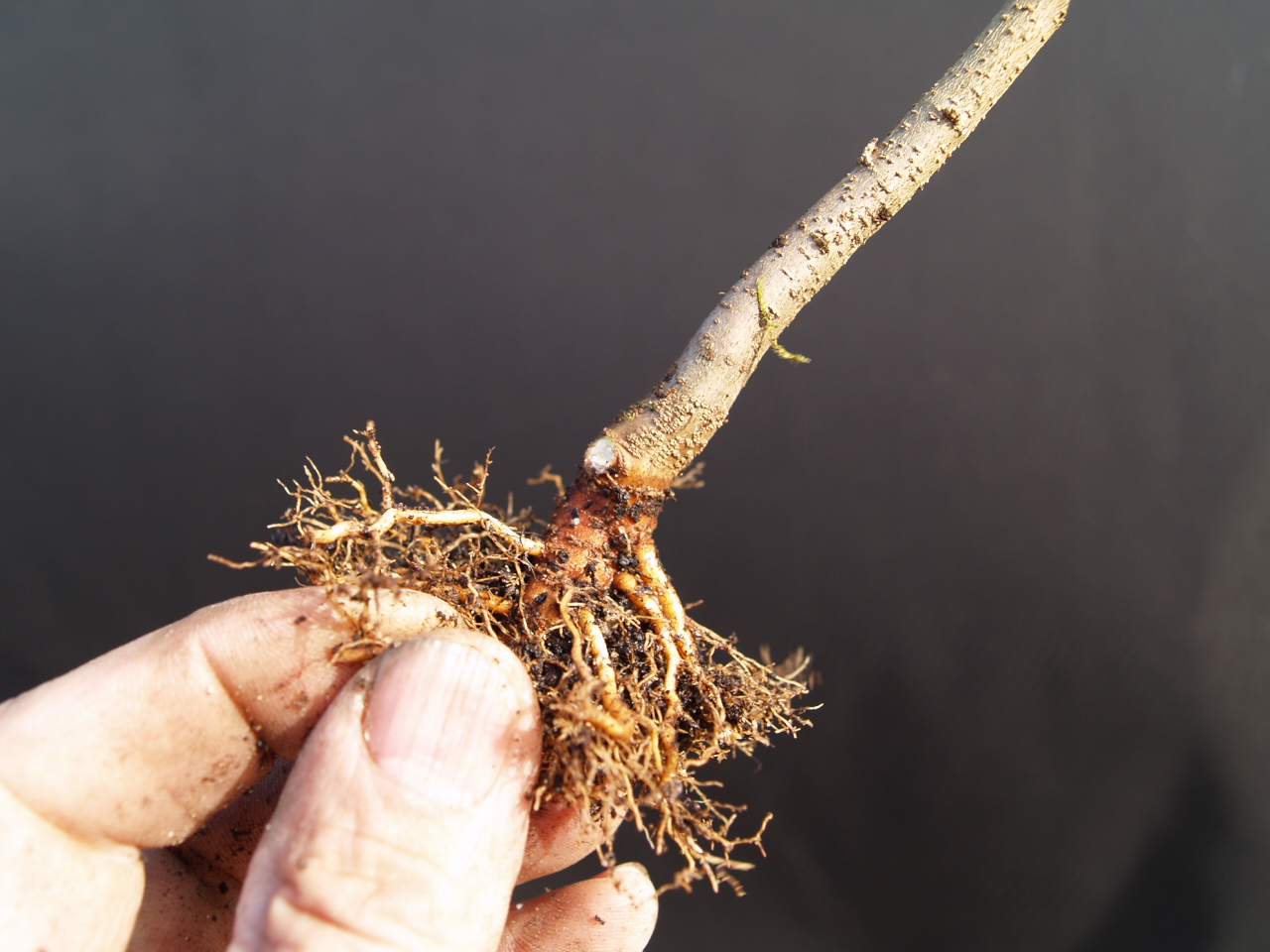
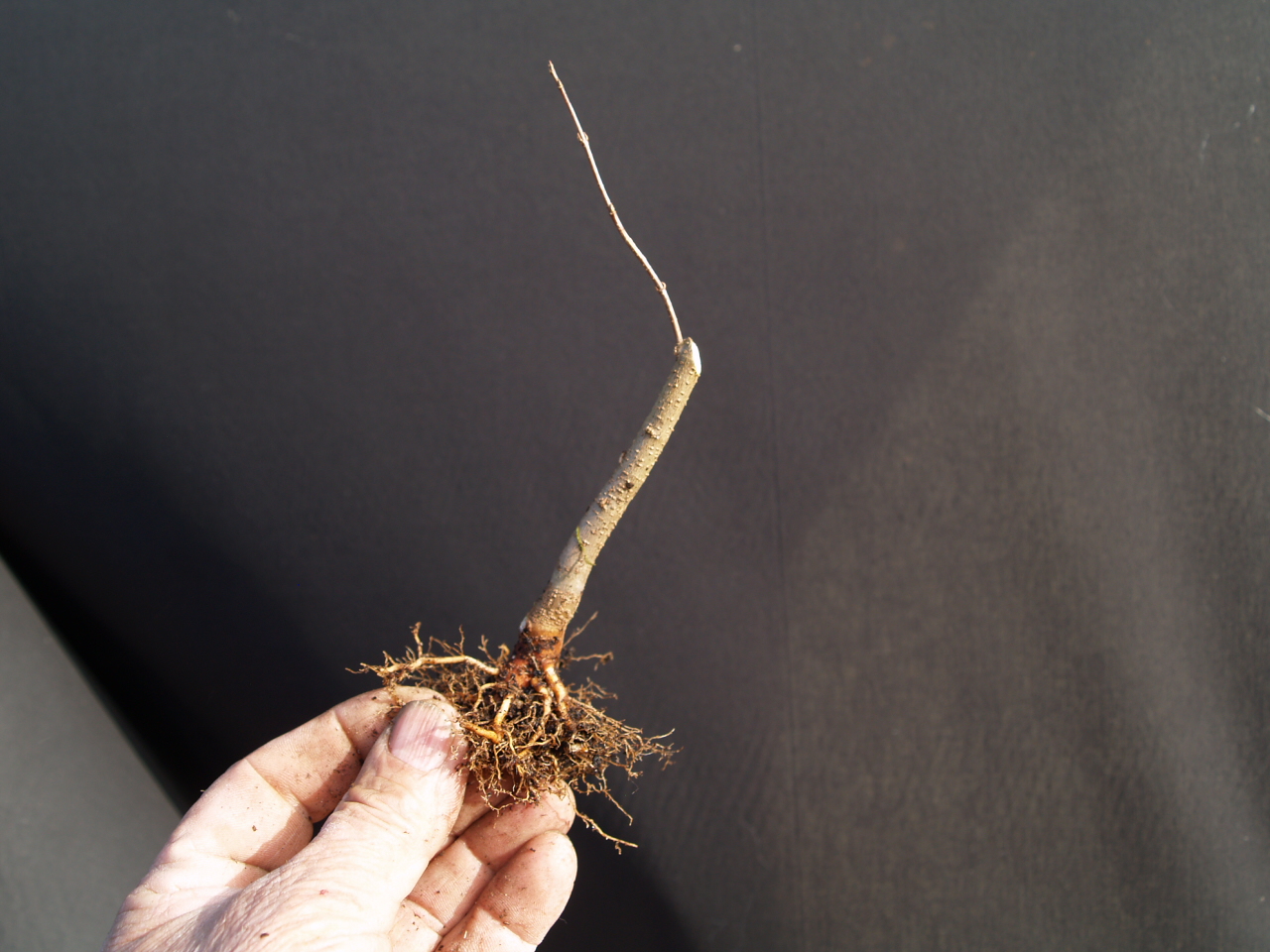
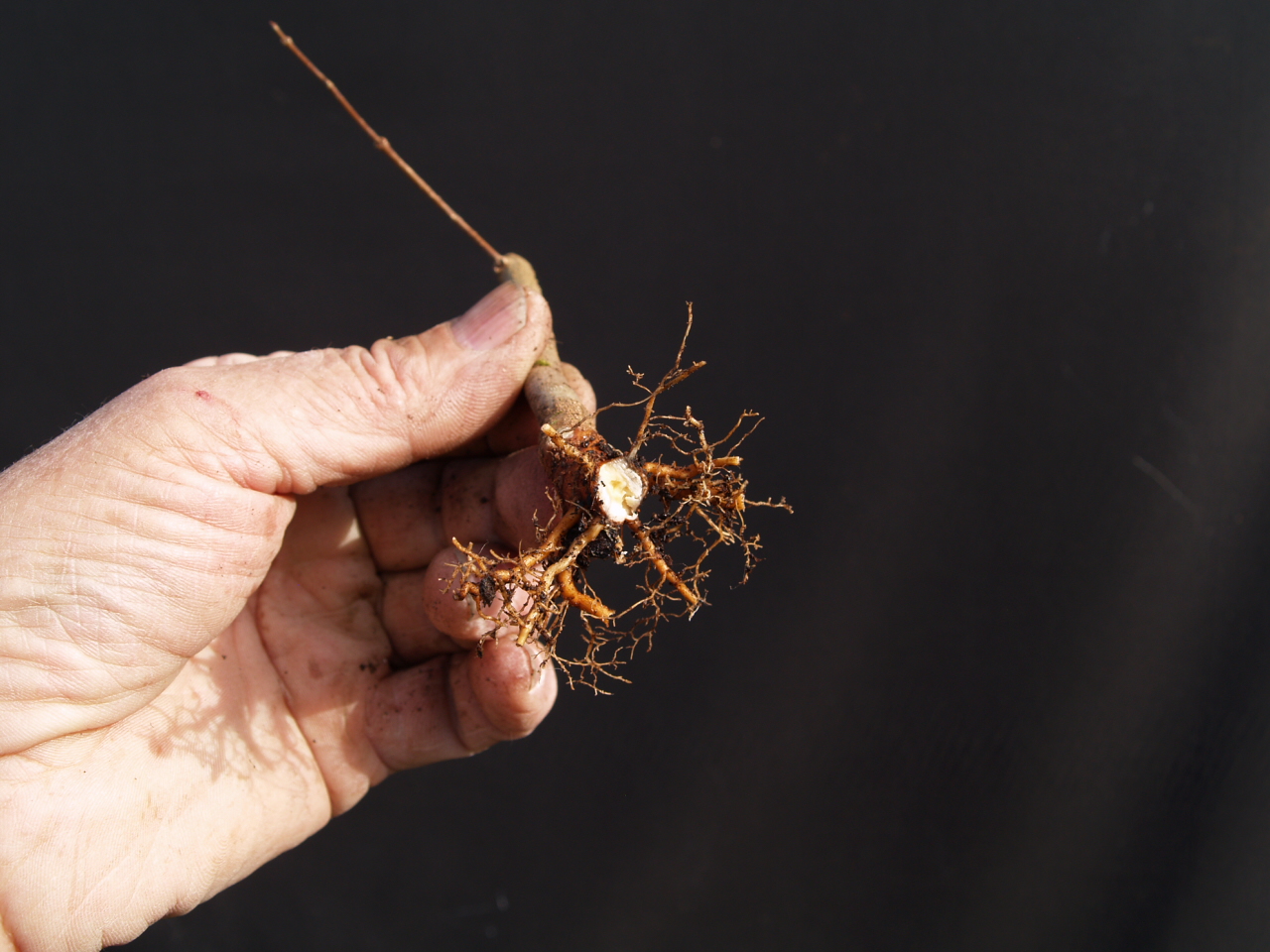
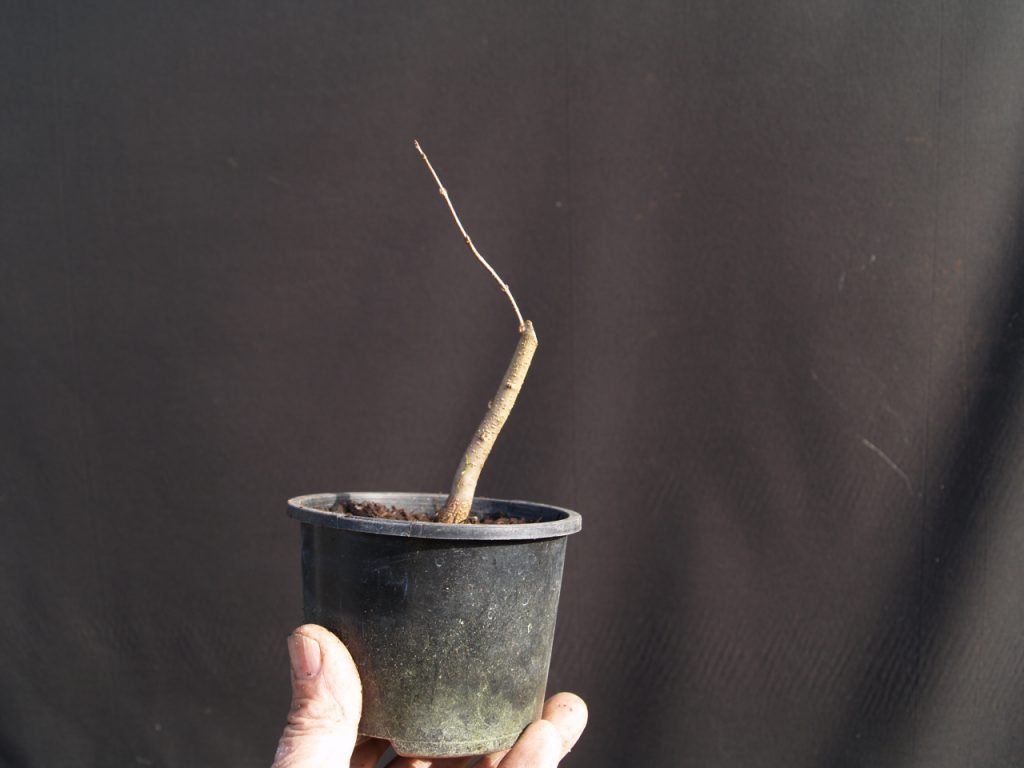
Finally the freshly root pruned trees is potted up – at the new angle – ready for another year of growth. because I’m aiming to develop smaller, shohin sized bonsai I’ve used another smaller pot to restrict internode size. Feel free to use a larger pot if you’re aiming for larger sized bonsai.
Here are some more initial pruning for small bonsai using other species
